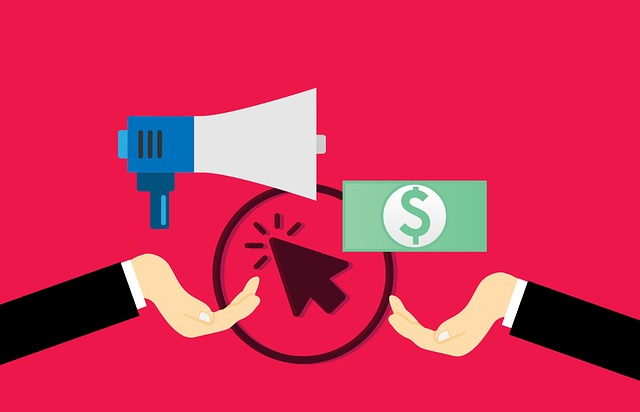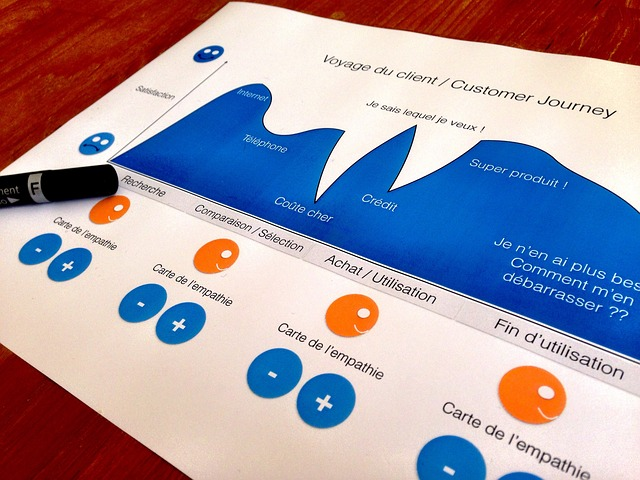How can Audience Segmentation Enhance your Inbound Marketing Efforts

Audience segmentation enhances inbound marketing efforts by allowing for more targeted and relevant content, improving engagement and conversion rates. So, How can audience segmentation enhance your inbound marketing efforts?
What is Audience Segmentation
Audience segmentation is the process of dividing a target market into distinct groups based on shared characteristics, such as demographics, behaviors, and interests, to deliver more personalized and relevant marketing messages.
How to Use Audience Segmentation for Inbound Marketing Strategy
Tailoring Content to Specific Interests
Inbound marketing strategies thrive on delivering content that speaks directly to the pain points and interests of different segments. By leveraging audience segmentation, inbound marketing campaigns can create personalized content for each specific segment, significantly enhancing customer engagement.

This focused targeting ensures that potential customers receive marketing messages that resonate with them, increasing the likelihood of capturing their interest and moving them through the sales funnel. Effective audience segmentation empowers marketers to gain valuable insights into consumer behavior, allowing them to craft highly targeted campaigns.
This data-driven approach not only maximizes the impact of the marketing budget but also ensures that every piece of content, from blog posts to targeted ads, is relevant to the intended audience. Delivering personalized experiences in this way keeps customers engaged, encouraging repeat business and nurturing long-term relationships.
Personalized Email Marketing
Personalized email marketing, a cornerstone of effective inbound marketing campaigns, leverages audience segmentation to deliver personalized content.

By analyzing data and demographic information, marketers can create segments based on specific characteristics, enabling them to send targeted messages that resonate with each audience segment.
This audience segmentation process helps in crafting emails that are not just relevant, but also highly appealing to recipients. Using data-driven insights from customer surveys and website analytics, personalized email campaigns can address the unique needs and interests of different audience segments, significantly enhancing engagement and conversion rates.
Targeted Social Media Campaigns
Targeted social media campaigns utilize audience segmentation to create content that speaks directly to various defined groups. Through the audience segmentation process, inbound marketing initiatives gain accurate insights into the preferences and behaviors of different audience segments.

This data-driven approach allows for creating segments based on detailed demographic data, interests, and engagement patterns. By delivering personalized and relevant campaigns, tailored specifically to target audiences, social media becomes a powerful tool in reaching and engaging potential customers.
These tailored campaigns, driven by segmentation data, ensure that advertising campaigns are not only relevant but also highly effective in fostering customer engagement.
Improved Lead Nurturing
Audience segmentation plays a critical role in improving lead nurturing within inbound marketing campaigns. By defining groups based on specific characteristics and behaviors, marketers can create targeted content that addresses the specific needs and interests of each segment.

This targeted messaging approach significantly enhances the effectiveness of lead nurturing efforts, as it ensures the delivery of personalized and relevant content.
Audience segmentation helps in making data-driven decisions, enabling marketers to tailor their communication strategies for different segments, ultimately leading to more efficient and successful conversion of leads into customers.
Enhanced SEO Strategies
Audience segmentation enables marketers to refine their SEO strategies by targeting segments with tailored content. By understanding the specific search behaviors and preferences of different audience groups, inbound marketing teams can create blog posts and other content that is highly relevant to each segment.

This targeted approach not only improves the relevance of the content for the audience but also enhances the visibility of the content in search engine results.
Through audience-based SEO strategies, businesses can significantly enhance their online presence and attract more qualified traffic to their website.
More Effective PPC Campaigns
Utilizing audience segmentation in PPC (Pay-Per-Click) campaigns leads to more effective advertising efforts. By segmenting the target market into defined groups, marketers can create highly targeted ads
that deliver personalized and relevant content. This focused approach allows for more precise targeting of ads, ensuring they reach the most receptive audience segments.

Audience segmentation helps in crafting PPC campaigns that are audience-based, leading to higher engagement and conversion rates. The use of data-driven decisions in targeting segments ensures that each ad campaign is optimized for the best possible performance.
By leveraging targeted content and messaging, PPC campaigns become a powerful tool in any inbound marketing strategy, driving significant results and enhancing overall campaign effectiveness.
Optimized Blog Content
Audience segmentation enhances inbound marketing efforts by enabling the creation of optimized blog content. Through the audience segmentation process, marketers can identify the specific pain points and interests of different segments within the target audience.

This insight allows for the development of blog posts that are highly relevant and engaging for each group. By tailoring content to address the unique needs and preferences of defined groups, inbound marketing campaigns can deliver targeted messages that resonate more effectively with readers, thereby enhancing overall marketing strategies and audience engagement.
Better Resource Allocation
Incorporating audience segmentation into your inbound marketing strategy leads to better resource allocation and more efficient project staffing. By understanding the distinct characteristics and needs of different audience segments, inbound marketing efforts can be more focused and efficient.

This approach enables marketers to allocate resources, such as budget and time, to create segments that are most likely to respond positively to targeted messages and ads. Audience segmentation helps prioritize marketing efforts, ensuring that resources are invested in campaigns and strategies that yield the highest returns.
Enhanced Customer Journey Mapping
Audience segmentation plays a pivotal role in enhancing customer journey mapping as part of an inbound marketing campaign.
By segmenting the audience, marketers gain insights into the varied paths that different groups take during their buying process. This knowledge allows for the creation of more personalized and effective marketing messages and strategies, tailored to the specific stages of the customer journey for each segment.

Enhanced journey mapping leads to a more coherent and targeted inbound marketing strategy, addressing the unique needs and expectations of each defined group.
This targeted approach not only improves the customer experience but also enhances the overall effectiveness of inbound marketing campaigns, by ensuring that each touchpoint is optimized for the specific journey and pain points of the target audience.
Increased Customer Retention
Audience segmentation is a key factor in increasing customer retention through inbound marketing efforts. By creating segments based on customer behavior, preferences, and engagement history, inbound marketing strategies can deliver highly personalized and targeted messages that resonate with each segment.

This personalized approach fosters a deeper connection with the audience, as they receive content and offers that are specifically tailored to their interests and needs.
Such targeted ads and messages make customers feel understood and valued, increasing their loyalty and likelihood of repeat business.
Effective audience segmentation, therefore, not only attracts new customers but also plays a crucial role in retaining existing ones, enhancing the overall success of inbound marketing campaigns.
Key Takeaways
- Audience segmentation allows for personalized and targeted marketing messages, enhancing engagement and conversion.
- It leads to efficient resource allocation and optimized marketing strategies.
- Segmentation enhances customer journey mapping, leading to improved customer experiences.
- It significantly boosts content relevance in blogs and social media.
- Audience segmentation increases customer retention through personalized interactions.
Conclusion on How can audience segmentation enhance your inbound marketing efforts
Audience segmentation is vital in refining and focusing inbound marketing strategies, leading to increased effectiveness and customer engagement.
FAQ on How can audience segmentation enhance your inbound marketing efforts
How can audience segmentation enhance your inbound marketing effort?
Audience segmentation enhances inbound marketing by allowing for targeted and personalized content, improving engagement and conversion rates.
How to use audience segmentation to boost your content marketing efforts?
Use audience segmentation to tailor content to specific interests and needs of different segments, making your content marketing more effective and relevant.
What is the importance of audience segmentation?
Audience segmentation is important for delivering personalized marketing experiences, understanding customer needs better, and improving engagement and conversion rates.
How can I do good inbound marketing?
Good inbound marketing involves creating valuable content, understanding your audience, utilizing SEO and social media effectively, and continuously analyzing and refining strategies.
How can audience segmentation and answer inbound marketing efforts?
Audience segmentation answers inbound marketing efforts by providing targeted, relevant content and interactions, leading to more effective marketing and higher customer satisfaction.
How do you use audience segmentation?
Use audience segmentation by dividing your audience into groups based on characteristics like behavior, demographics, and interests, then tailor your marketing to these groups within inbound marketing efforts.
What is audience segmentation in marketing?
Audience segmentation in marketing is the process of dividing a target audience into smaller, more defined groups based on shared characteristics for more targeted marketing e.g., in a blog post.
How does target audience affect marketing strategy?
The target audience affects marketing strategy by determining the content, channels, messaging, and overall approach used to engage and convert potential customers.
What are the 4 main types of market segmentation?
The 4 main types of market segmentation are demographic, psychographic, behavioral, and geographic segmentation.



